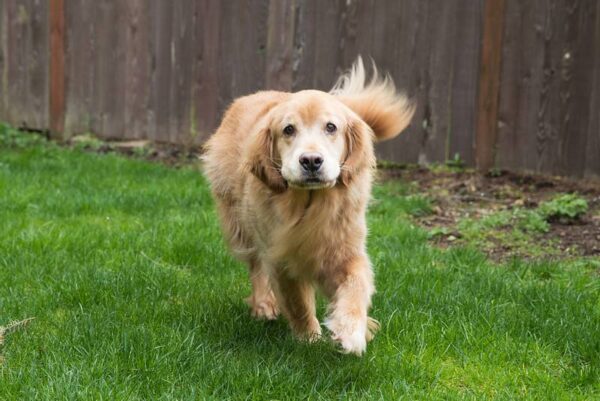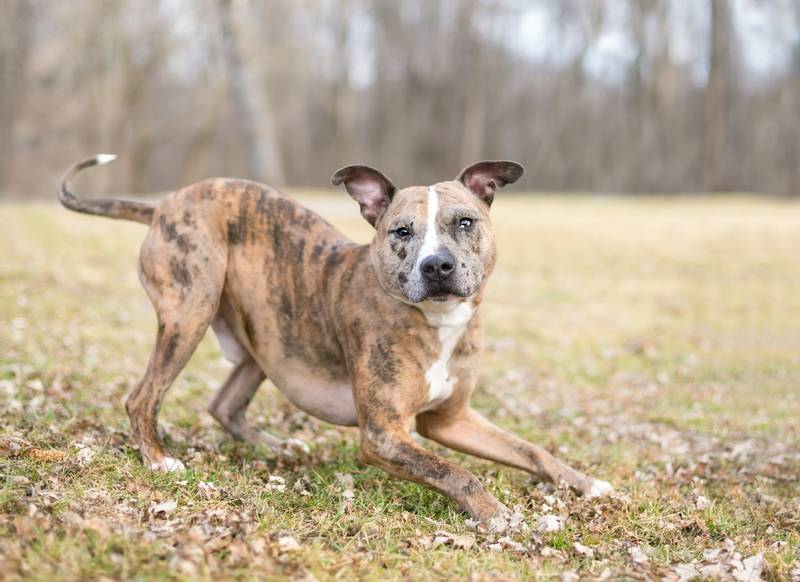I must say that the tail is a very useful and versatile part of the body, so every decent dog takes care of it and is proud of it, well, if, of course, has it available.

First of all, a dog uses its tail movement to maintain balance when chasing game, when running, to make sharp turns, when swimming, and when overcoming obstacles (such as a log). Some evolutionists believe that this is what it was invented for. But when it appeared, clever dogs found several other uses for it. And for starters, they taught the tail to wag, i.e., not just to move chaotically meaningless, but to make rhythmic pendulum-like movements.
It is believed that dogs wag their tail also to introduce themselves, and remotely. That is to show their ID card, and it’s not a paper one, but a scent one. Under the tail dogs have paraanal glands, which, among other things, contain all the useful information about the subject-carrier of these glands. By the way, for this information dogs stick their noses under each other’s tail. Meeting a mate, a confident dog, approaching the opponent, actively waving his tail, helping the smell to spread. And right on the nose hits the olfactory “business card”, which boldly indicates sex, age, physical and physiological condition and even some claims. But an insecure dog doesn’t wag its tail in particular, but on the contrary, it pinches it, blocking the spreading of the smell: saying, here, except for you, nobody smells and there is nobody!

Even wagging of the tail is biologically associated with the excitement level and emotional state. That is, the wagging of the tail involuntarily reflects the dog’s psycho-physiological state, in other words, it is a behavioral marker of this very state. Thus, with the tail (or rather, with its help) we can transmit information about the state and intent.
Dogs wag their tails when they are happy, pleased, anticipating something pleasant, but also in a state of aggression or even fear.
Tail wagging is always context dependent. In order to determine its meaning here and now, it is necessary to take into account first of all the position of the tail in relation to the body, the nature of the sounds made by the dog, the severity of the gaze, the position of the ears, the body and even the expression of the muzzle.
It is considered that the speed of wagging the tail and the amplitude of the movement indicate the degree of excitement. At the same time the wider the wagging of the tail the more positive emotions the dog is experiencing.
For example, a friendly facial expression accompanied by light tail wagging is a sign of calmness or friendly interest. The intense waving of the tail together with the joyful barking and jumping indicates jubilation and expresses exuberant joy. The rapid movement of the tail with the bowed head is a pose of appeasement. The slight wagging of the tail indicates watchful waiting, and possibly a
ggressive developments.
Dogs often wag their tail in their sleep. This is because alternating images of play, hunting or fighting activate the corresponding emotional centers of the brain.
Italian scientists conducted some funny, but quite serious experiments. They analyzed tail wagging in dogs that were presented with an owner and an unfamiliar dog. The dogs wagged their tails in all cases, but at the sight of the owner the test dogs wagged more to the right side, and at the sight of the unfamiliar dog they wagged more to the left side.
Scientists concluded that if a dog wagged its tail more to the right, it meant it was in a benevolent mood, but if it wagged to the left – it was better to climb a tree.
Moreover, scientists found out that a dog looking at another dog wagging its tail understands perfectly well what it is wagging about.
So, one group of dogs was shown a silhouette of a dog wagging or not wagging its tail, and another group was shown a normal image of a dog. At the same time, the viewer dogs had their heart rate recorded. It turned out that when the dog saw the silhouette or another dog wagging its tail to the left, its heart began to beat faster. Standing motionless also caused stress. But if the dog wagged its tail to the right, the spectator dogs remained calm.


Leave a Reply